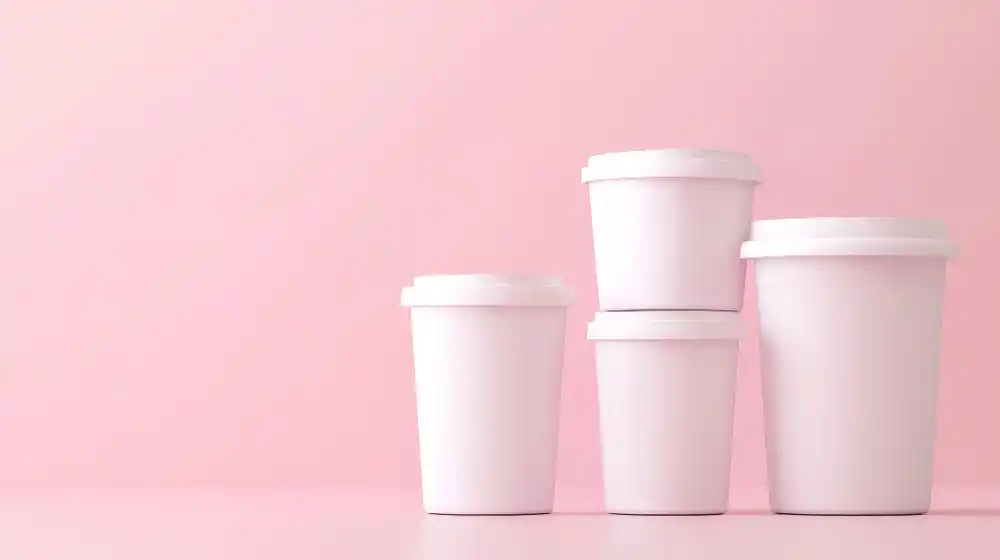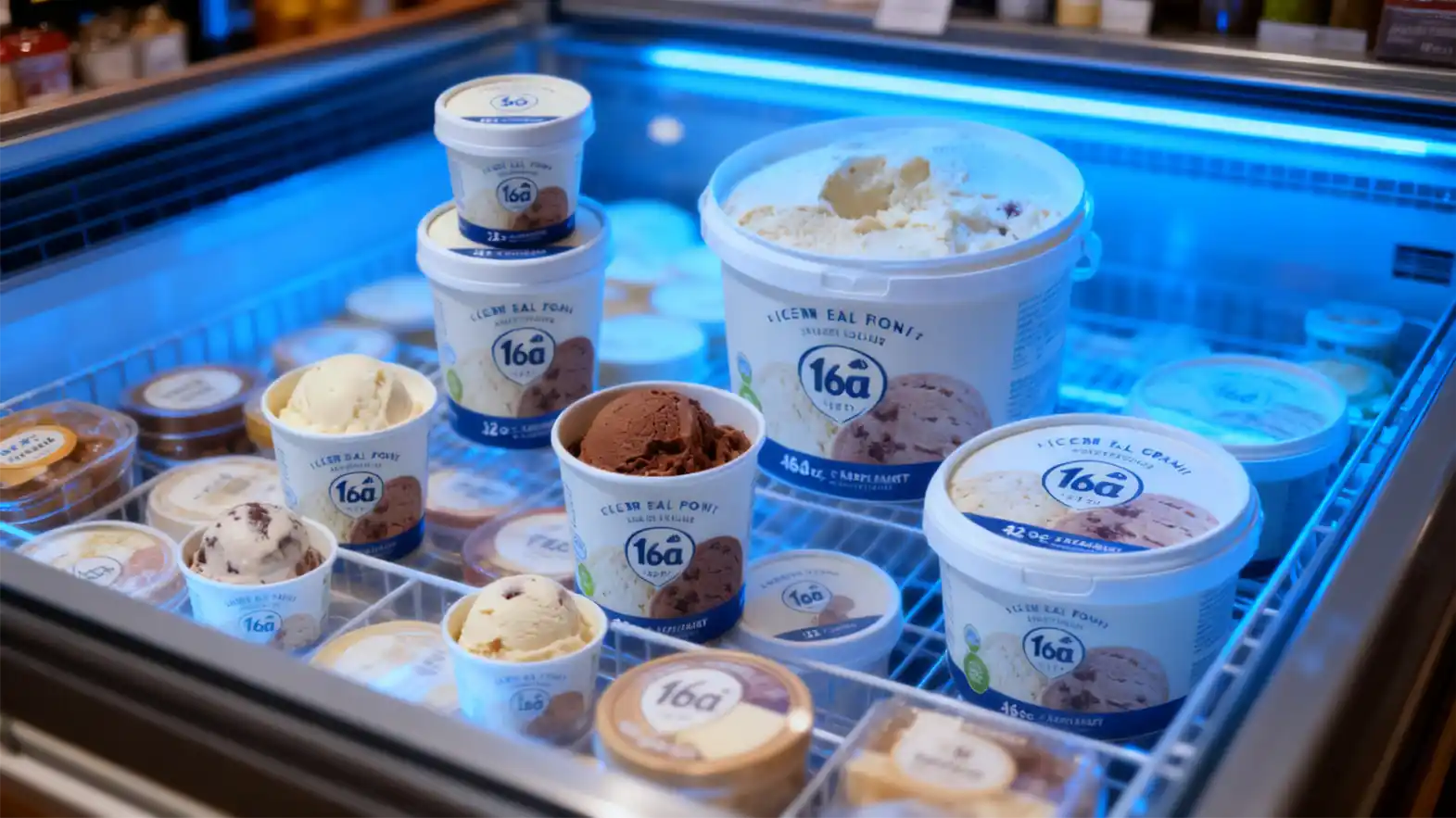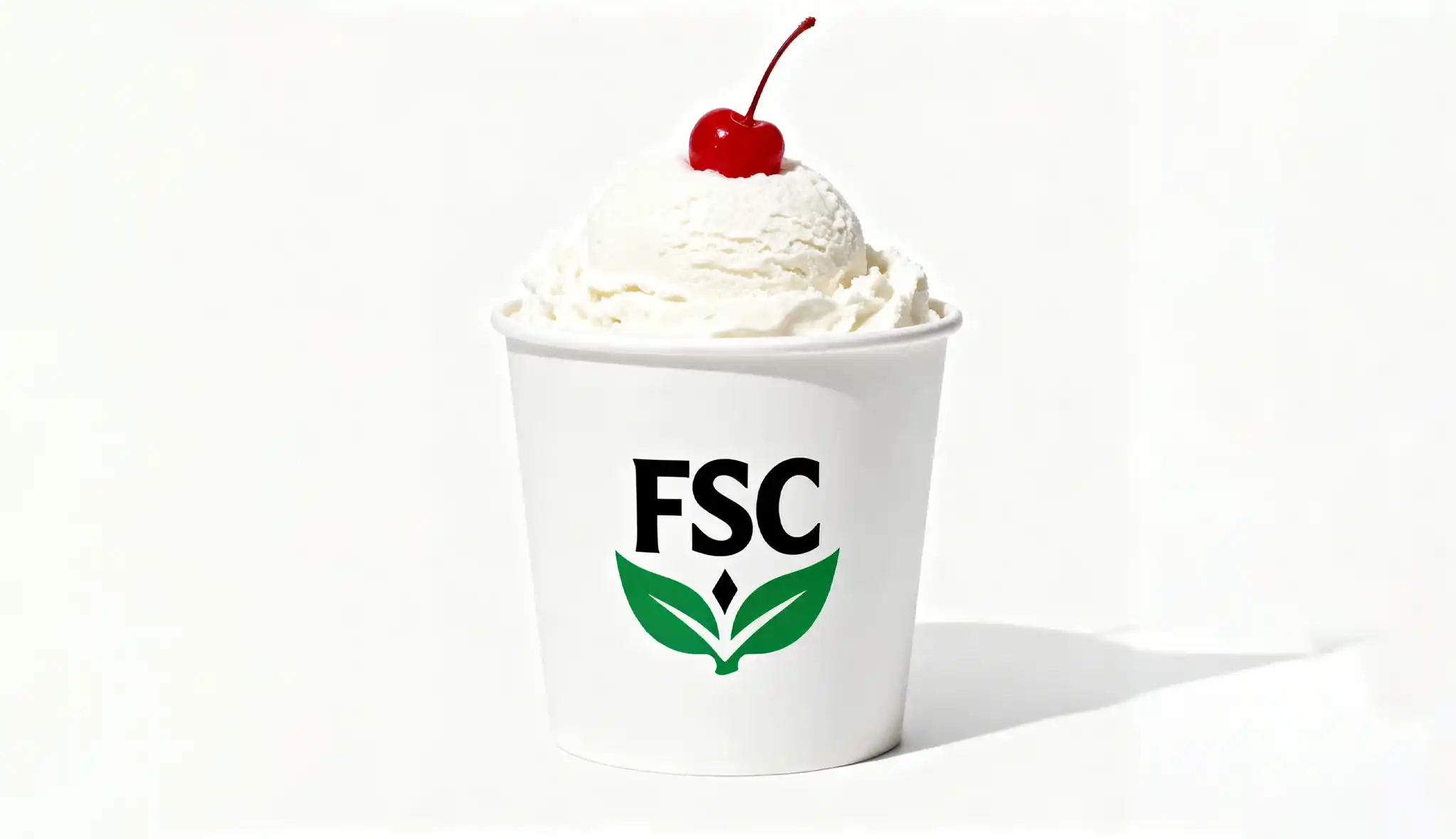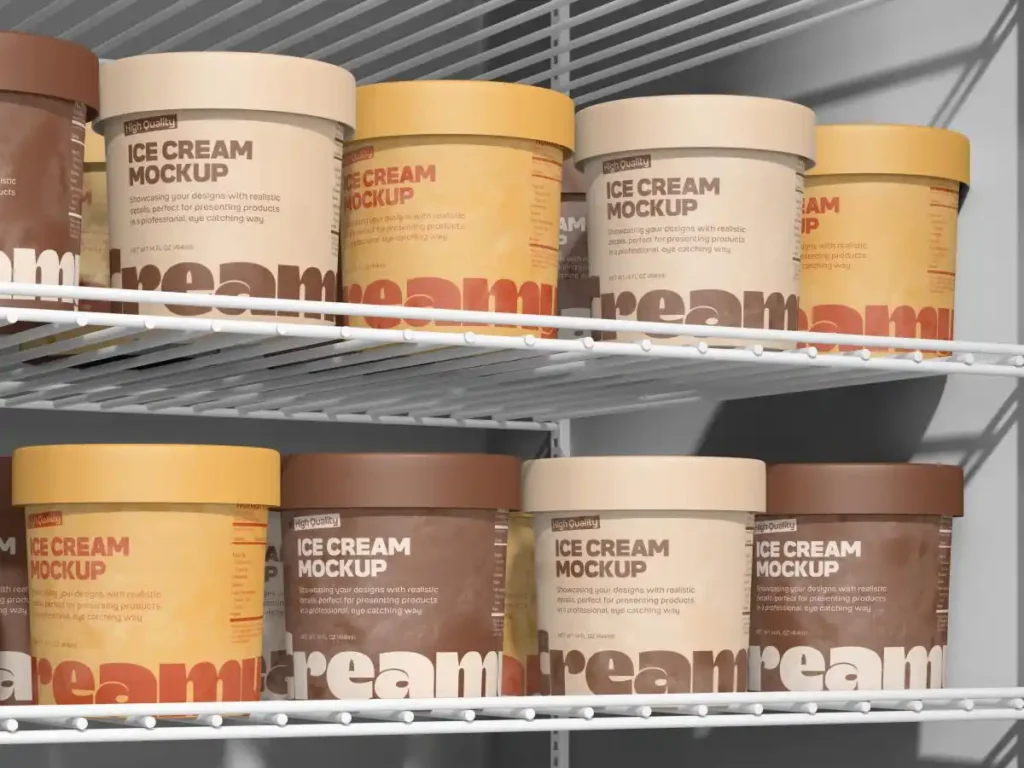Struggling to find the perfect packaging for your ice cream? The wrong choice can lead to freezer burn and a poor brand image. You need a solution that protects and sells.
To choose the right ice cream container, first identify your target market and volume needs (e.g., single-serving, family-size). Then, select a material like PE-coated paperboard for moisture resistance and durability. Finally, ensure the design aligns with your brand and production capabilities.

Choosing the right container is more than just picking a size. It's a critical decision that impacts your product's quality, your brand's perception, and even your production line's efficiency. I've spent over 16 years in this industry, and I've seen firsthand how a well-chosen container can make a huge difference. Let's break down the key factors to help you make the best choice, from standard sizes to the latest sustainable materials. This guide will give you the confidence to select packaging that truly works.
What Are the Most Common Ice Cream Tub Sizes?
Finding the right size feels overwhelming. You want to offer variety, but managing too many SKUs is a nightmare. How do you meet customer expectations without complicating your inventory and logistics?
The most common ice cream tub sizes range from single servings like 3-5 oz cups to retail pints (16 oz), quarts (32 oz), and larger family-style containers (48-64 oz). Choosing depends on your sales channel: single servings for parlors, pints for premium retail.

As a designer, you know that size isn't just about volume; it's about the user experience and market positioning. A small, single-serving cup communicates a personal treat, while a large tub is all about family sharing. When I work with clients, we always start with the target audience. A gelato brand targeting young professionals might focus on elegant 5 oz cups, while a family-friendly brand needs a cost-effective half-gallon. We also have to think about the practical side. How will these sizes fit in a standard freezer, both in the store and at home? I always recommend mapping out the entire journey, from your production line to the customer's freezer shelf.
Understanding Volume and Dimensions
The size name—pint, quart—tells you the volume, but the actual dimensions are crucial for your design and logistics. The shape (round, square, or rectangular) affects everything from labeling space to shipping efficiency. Round tubs are classic and easy to scoop from, but square containers are more space-efficient for shipping and storage. Here is a table to help you visualize common options.
| Size Name | Typical Volume (fl oz) | Typical Use Case | Design Considerations |
|---|---|---|---|
| Single Scoop Cup | 3 - 5 oz | Foodservice, parlors, samples | Stackable design, easy to hold, lid optional |
| Pint | 16 oz (473 ml) | Premium retail, standard size | Ample branding space, most common retail size |
| Quart | 32 oz (946 ml) | Family packs, value brands | Larger surface for graphics, requires strong structure |
| Half Gallon | 64 oz (1.89 L) | Bulk, foodservice, family value | Must be structurally sound, focus on cost-efficiency |
Think about how these dimensions will work with your automated filling and lidding machines. A slight change in diameter can require significant re-tooling, a costly mistake I've helped many partners avoid.
Which Material is Best for Your Ice Cream Tubs?
Choosing a material is a tough balancing act. You need something that prevents leaks and freezer burn, but it also has to be affordable and look great on the shelf. Can one material really do it all?
The best and most common material is Solid Bleached Sulfate (SBS) paperboard with a polyethylene (PE) coating. SBS provides a bright white, smooth surface for high-quality printing, while the PE coating creates a moisture barrier to prevent leaks and protect the product.

For a product like ice cream, the material has to perform under extreme conditions—from freezing temperatures to condensation. In my experience, paperboard is the industry standard for a reason. It offers a great combination of rigidity, insulation, and printability. Plastic (like HDPE) is another option, often used for transparent tubs that show off the product, but it doesn't offer the same premium feel or branding surface as paper. I once worked with a startup that initially chose a cheaper, uncoated paperboard to save money. It was a disaster. The containers became soggy, the lids popped off, and the ice cream was ruined by freezer burn. We quickly switched them to a proper double PE-coated SBS board, and their quality problems vanished. It’s a lesson in not cutting corners on the one thing that protects your product.
Comparing Paperboard Options
Not all paperboard is created equal. For a designer like you, Peter, understanding the nuances can help you make a better recommendation to your clients. The choice of coating is just as important as the board itself.
-
Substrate (The Paperboard):
- Solid Bleached Sulfate (SBS): This is the premium choice. It's made from virgin bleached pulp, giving it a bright white surface that is perfect for high-impact graphics. Its strength and stiffness are ideal for holding frozen products.
- Folding Box Board (FBB): Often has a creamy or off-white backside. It's a multi-ply board that can be a cost-effective alternative to SBS, but the print quality might be slightly less vibrant.
-
Coating (The Barrier):
- Polyethylene (PE) Coating: This is the industry workhorse. A thin layer of plastic is extruded onto the paperboard. A single coating (1PE) is on the inside to hold the product, while a double coating (2PE) on both sides prevents condensation from making the outside soggy.
- Polylactic Acid (PLA) Coating: This is a compostable, plant-based bioplastic. It’s a great sustainable packaging alternative to PE, but it can be more expensive and may have different performance characteristics at very low temperatures. We'll touch on this more later.
How Can Customization and Printing Make Your Ice Cream Stand Out?
Your client has a fantastic product, but it's sitting in a crowded freezer next to dozens of competitors. How do you use the package design to grab a customer's attention in just a few seconds?
Use high-quality offset or flexographic printing to create vibrant, eye-catching graphics. Incorporate special finishes like spot UV, embossing, or foil stamping to add a tactile, premium feel. Unique structural designs, like a custom-shaped lid, can also create a memorable brand identity.

A package is your most important marketing tool at the point of sale. I've seen brands double their sales simply by investing in a packaging redesign. It’s not just about a nice logo; it’s about telling a story. The colors, typography, and imagery all work together to communicate your brand's personality—is it fun and playful, or is it a sophisticated, adult treat? And don't forget the finish. A matte finish can feel modern and organic, while a high-gloss finish makes colors pop. One of the most effective projects I worked on involved a gelato company that used an embossed texture on their lids. This small, tactile detail made their product feel incredibly luxurious and justified its premium price point. It’s these little things that turn a simple container into a powerful brand ambassador.
Key Customization Techniques
To create a truly unique package, you need to combine great graphic design with the right production techniques. Here’s a breakdown of options that can elevate your design.
-
Printing Methods:
- Offset Printing: The gold standard for quality. It produces sharp, consistent images and is ideal for large runs where color accuracy is critical.
- Flexographic Printing: More cost-effective for very large quantities. Modern flexo can achieve high quality, but offset is generally preferred for premium graphics.
- Digital Printing: Perfect for short runs, prototypes, or market tests. It allows for variable data printing, but the cost per unit is higher.
-
Finishing Touches:
- Varnishes & Laminations: Add a gloss, matte, or satin finish to protect the print and enhance the look and feel.
- Foil Stamping: Applying metallic foil to specific areas of the design to create a sense of luxury.
- Embossing/Debossing: Raising or depressing parts of the paperboard to create a 3D, tactile effect that customers can feel.
Balancing these options with your client's budget is key. A simple, elegant design executed perfectly with one special finish is often more effective than a busy design that tries to do everything at once.
What Are the Sustainable Options for Ice Cream Packaging?
Consumers are more eco-conscious than ever. They want to enjoy their treats guilt-free, but traditional packaging often involves plastic. How can you offer a responsible solution that still performs perfectly?
Sustainable options include using paperboard from certified sources like FSC or SFI, and choosing plant-based PLA coatings instead of petroleum-based PE. Designing for recyclability and clearly communicating disposal instructions to consumers are also key components of an eco-friendly strategy.

Sustainability is no longer a "nice-to-have"; it's a core expectation for many consumers. As a packaging professional, this is one of the biggest challenges—and opportunities—we face today. The goal is to reduce environmental impact without compromising product safety or performance. The move towards responsibly sourced paper is a great first step. It ensures that the raw material comes from well-managed forests. The bigger challenge has always been the plastic coating, which makes recycling difficult. This is where innovations like PLA come in. I'm currently working with several clients to transition from PE to PLA coatings. It requires rigorous testing to ensure it holds up in the freezer, but the payoff in brand reputation and consumer loyalty can be immense. It shows you're a brand that cares.
Navigating Eco-Friendly Choices
Making a sustainable choice requires looking at the entire lifecycle of the package. Here are the key areas to consider when advising your clients.
-
Responsible Sourcing:
- FSC (Forest Stewardship Council): This is a globally recognized certification ensuring that the paper pulp comes from responsibly managed forests that provide environmental, social, and economic benefits.
- Recycled Content: Incorporating post-consumer recycled (PCR) content is possible, but for direct food contact with a product like ice cream, virgin fiber like SBS is often required for safety and performance.
-
End-of-Life Options:
- Recyclability: PE-coated paperboard can be recycled, but it requires specialized facilities that can separate the plastic from the paper. Availability of these facilities varies by region.
- Compostability: PLA-coated containers are commercially compostable. This means they can break down into organic matter in an industrial composting facility, but not in a backyard compost pile.
It's crucial to be transparent. If you choose a PLA-coated tub, add clear labeling that says "Commercially Compostable" so consumers know how to dispose of it correctly. Greenwashing, or making misleading environmental claims, can do more harm to a brand than good. Honesty is always the best policy.
Conclusion
Choosing the right ice cream container involves balancing size, material, design, and sustainability. By understanding these key elements, you can create packaging that protects the product and builds a powerful brand.






